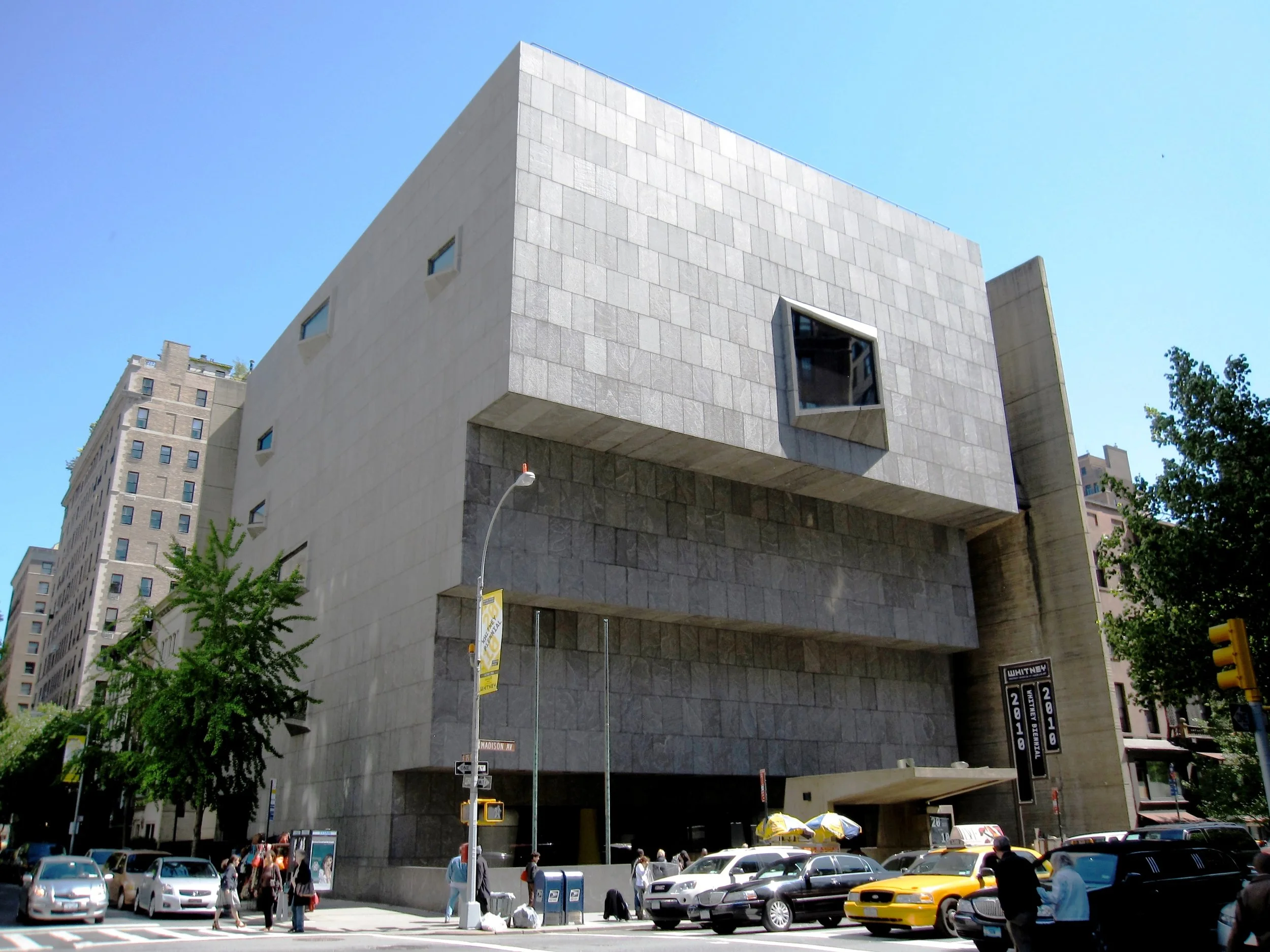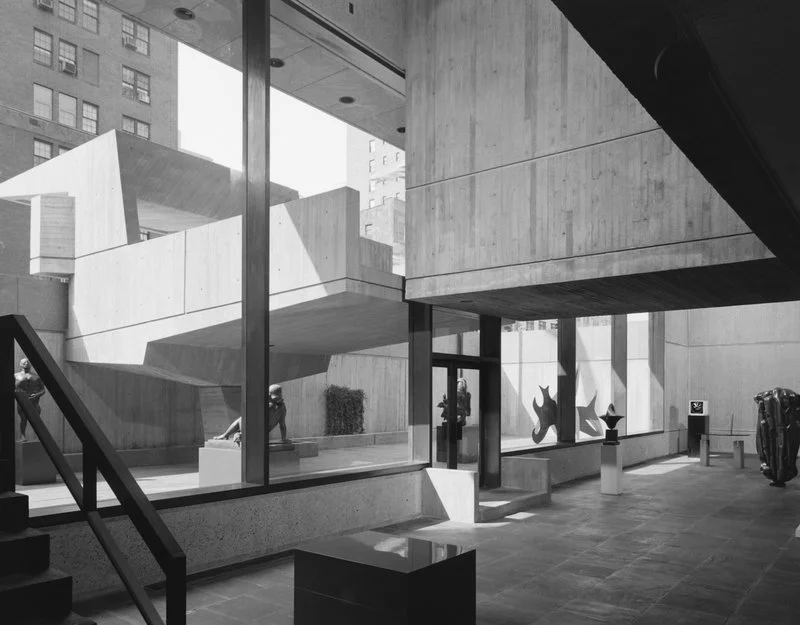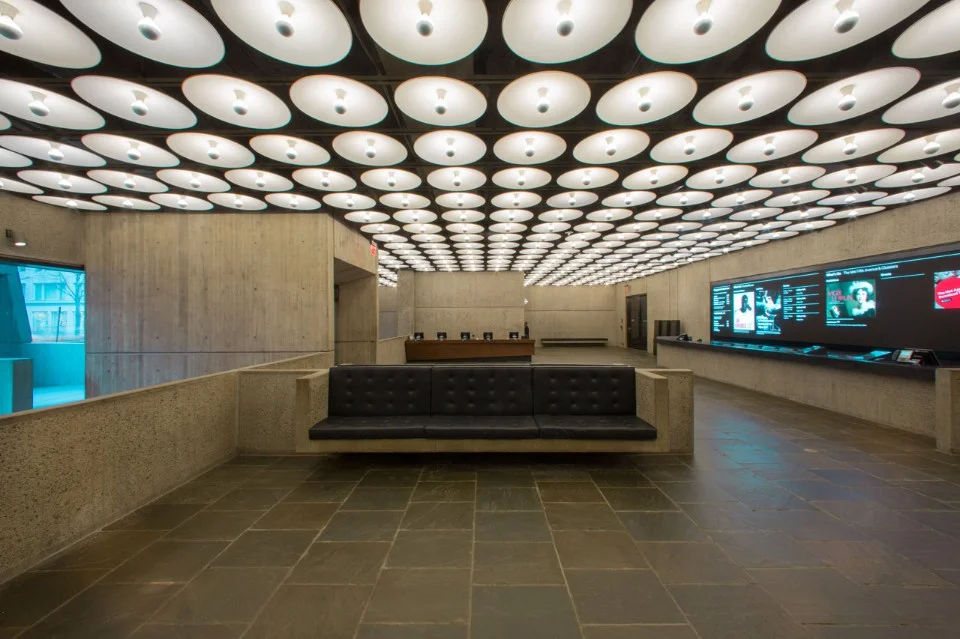The Whitney (MET BREuer)
Credit: Wiki Commons, 2010
MET BREUER (formerly WHITNEY MUSEUM OF AMERICAN ART)
Date: 1966
Architect: Marcel Breuer
Address: 945 Madison Avenue
Use: Museum
The Met Breuer's Madison Avenue facade, designed to resemble an upside down ziggurat. Credit: Ezra Stoller.
Founded in 1930, The Whitney Museum of American Art was the first museum in Manhattan devoted entirely to American Art with a contemporary focus. Originally located in three townhouses on West Eighth Street, the museum moved to a location on West 54th Street after a Museum of Modern Art Chair Trustee donated land. The new building on that site opened in 1954, but less than a decade later they would purchase a 100 x 125 foot corner lot on Madison Avenue and 75th Street, choosing architect Marcel Breuer to design a new 76,830-square-foot home, tripling the institution's exhibition space. Breuer's Whitney Museum opened in 1966, giving the museum its own modern identity. Breuer wrote that he wanted the new structure to stand out from its surroundings and not lack the anonymity of the surrounding streetscape.
“It should not look like a business or office building, nor should it looks like a place of light entertainment. Its form and material should have its own identity and weight in the neighborhood of fifty-story skyscrapers, or mile long bridges, in the midst of a dynamic jungle of our colorful city... . It should transform the vitality of the street into the sincerity and profundity of art.” (Marcel Breuer)
The Met Breuer's sunken sculpture court. Credit: Ezra Stoller.
Lobby when the Whitney still occupied the building. Credit: The Metropolitan Museum of Art, 2016.
Wrapped in concrete and faced in 1,500 granite slabs each weighing 500 to 600 pounds, the building stands out from the surrounding limestone, brick and brownstone townhouses and apartment buildings. Resembling an upside-down ziggurat, the front of the structure is surrounded by a moat looking trench, occupied by a sunken sculpture court, creating a gap between the sidewalk and the entrance, only bridged by a concrete span connecting Madison Avenue to the lobby. It was said that Breuer didn’t want any windows at all for his bunker-like museum, settling for artificial lighting, which would have provided a better display for the artwork inside.
For the interiors, Breuer used a vast array of materials including terrazzo, board-formed and bush-hammered concrete, bluestone for the floors, walnut parquet, and suspended precast concrete coffers for the ceiling. The museum’s four floors offer 26,7000 square-feet of gallery space, 21,500 square-feet of storage, a restaurant, and a 120 person film gallery. In 2016, the Whitney Museum moved into their new Renzo Piano-designed home on Gansevoort Street, leaving the Madison Avenue building to the Metropolitan Museum of Art who renamed it The Met Breuer after the building’s architect. Before the Met moved in, the building underwent a $600 million renovation led by architects Beyer Blinder Belle.
Breuer’s described the importance of function and material in his design:
“Its form and material should have identity and weight … in the midst of the dynamic jungle of our colorful city. It should transform the vitality of the street into the sincerity and profundity of art.”
Breuer's design brings together intimacy and tactility with open-plan gallery spaces. It comes across as a very sincere building – the materials are weighty without being oppressive. The structure is not only a physical exploration of the interplay between materiality and space, but it is a museum, one that is very different in planning and design from the museums that preceded it - having more in common with Kahn’s museums in New Haven and SAANA’s New Museum than with MoMA or the Met. Breuer’s design communicates that great architecture and the program of the museum are not mutually exclusive - the building can have character that can be felt from inside and out without impeding on the experience of viewing art. White boxes are not the only way to display art – it’s acceptable to have a strong sense of materiality within a museum.
The sunken sculpture garden on the west side of the Whitney. Credit: Ezra Stoller, 1966.
The building is full of surprising details: a carpet of lights on the entry floor ceiling, coffered concrete ceilings in the galleries containing a system of tracks for lighting and partitions, the strong materiality of the bluestone and wooden parquet floors with internal rhythms that would seem antithetical to the program of the museum – allowing the art to speak, while enhancing the overall experience. One of the best features may be the staircase; with wood, stone, bronze, steel, and multiple finishes of concrete, which work together to compress and expand the space.
In September 2018 it was announced the Metropolitan Museum of Art would lease the Met Breuer space to the Frick Collection starting in 2020 while Frick renovates and expands their gilded Fifth Ave mansion. This would relieve the Met of the last three years of their lease of the Breuer space, which saves the museum approximately $45 million. The Met has been facing financial trouble since moving its contemporary collection to the Breuer building in 2016 and plans to rebuild their modern gallery in the Fifth Avenue home. Following the closing of New York City museums during the COVID pandemic, the Frick shared plans relocate to the temporary space, dubbed Frick Madison in early 2021 through 2022. When the Met’s lease runs out in 2023 the owner of the building, the Whitney, will decide its fate. The building is a designated landmark, but the interior is not protected.
Is it brutalist? It’s hard to say. Recently the building has been classified as brutalist, and Breuer is certainly one of the key “brutalist” architects, but the term means so many different things. Breuer’s work, the Whitney included, operate at both extremes of the defining schools of modernism: functionalism and expressionism. They seem antithetical, and the way that the history of modernism is taught argues that they are, but any observation of the work of Breuer or Corbusier clearly shows that they are not opposite poles but operate simultaneously and inseparably in great modernism, whether it be architecture or art. We have a hard time wrapping our heads around this, so the term Brutalism steps in with all of its ambiguities to bring these two ideas together. The structure is expressionist and utilitarian; an inhabitable sculpture with grand and small artistic gestures that join dexterous functional planning to create a superb museum and one of New York’s greatest works of architecture. Just look at the windows and the form of the building - these are not necessarily functionalist choices, but they do indeed contribute to the building's successful functionality. Breuer has projects that are more expressionist and more functionalist, but elements like his windows and concrete piers always show one in the other. Brutalism is a nebulous concept - a style with many antecedents that few architects of the era would have likely subscribed to, but that, in hindsight, we can see in much of the architecture of the post-war era and many of the buildings in this survey.
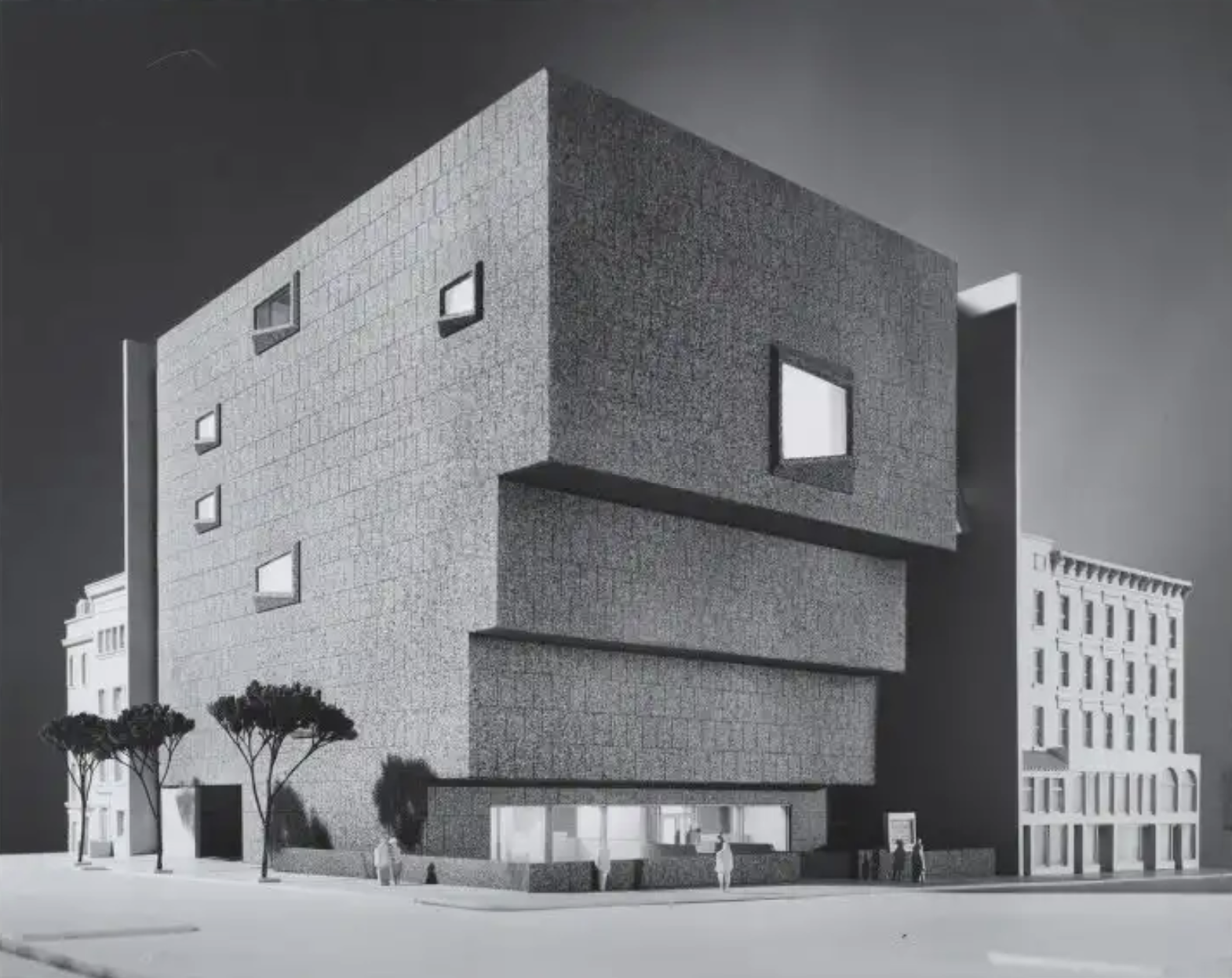
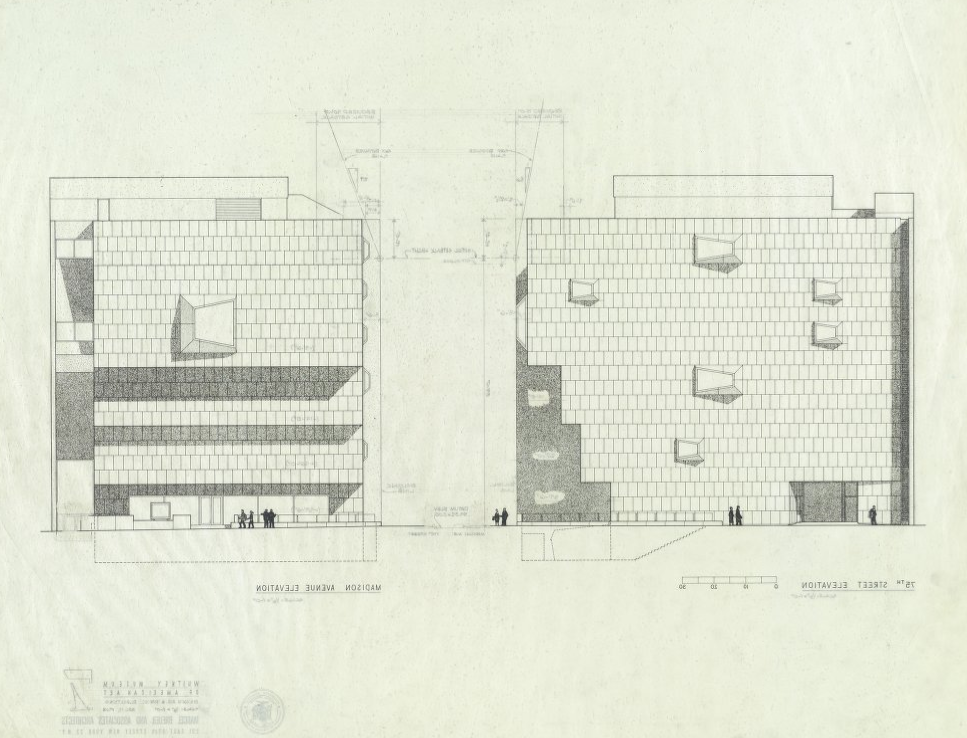

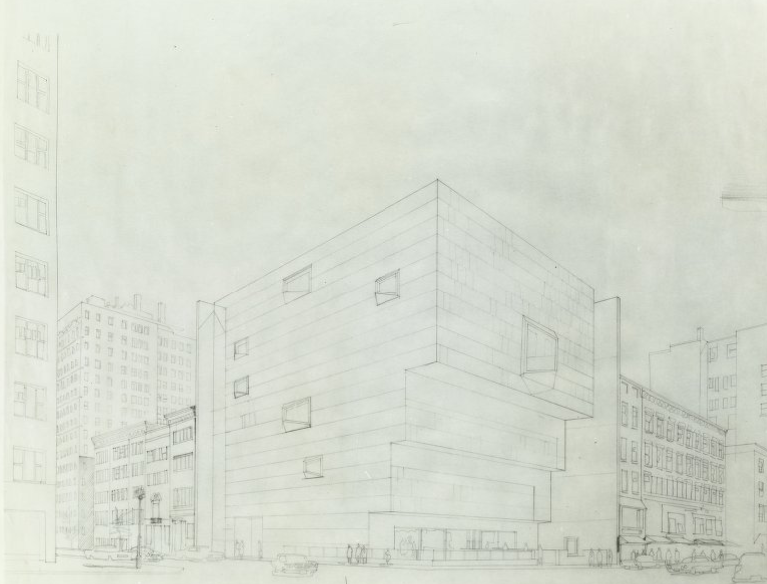


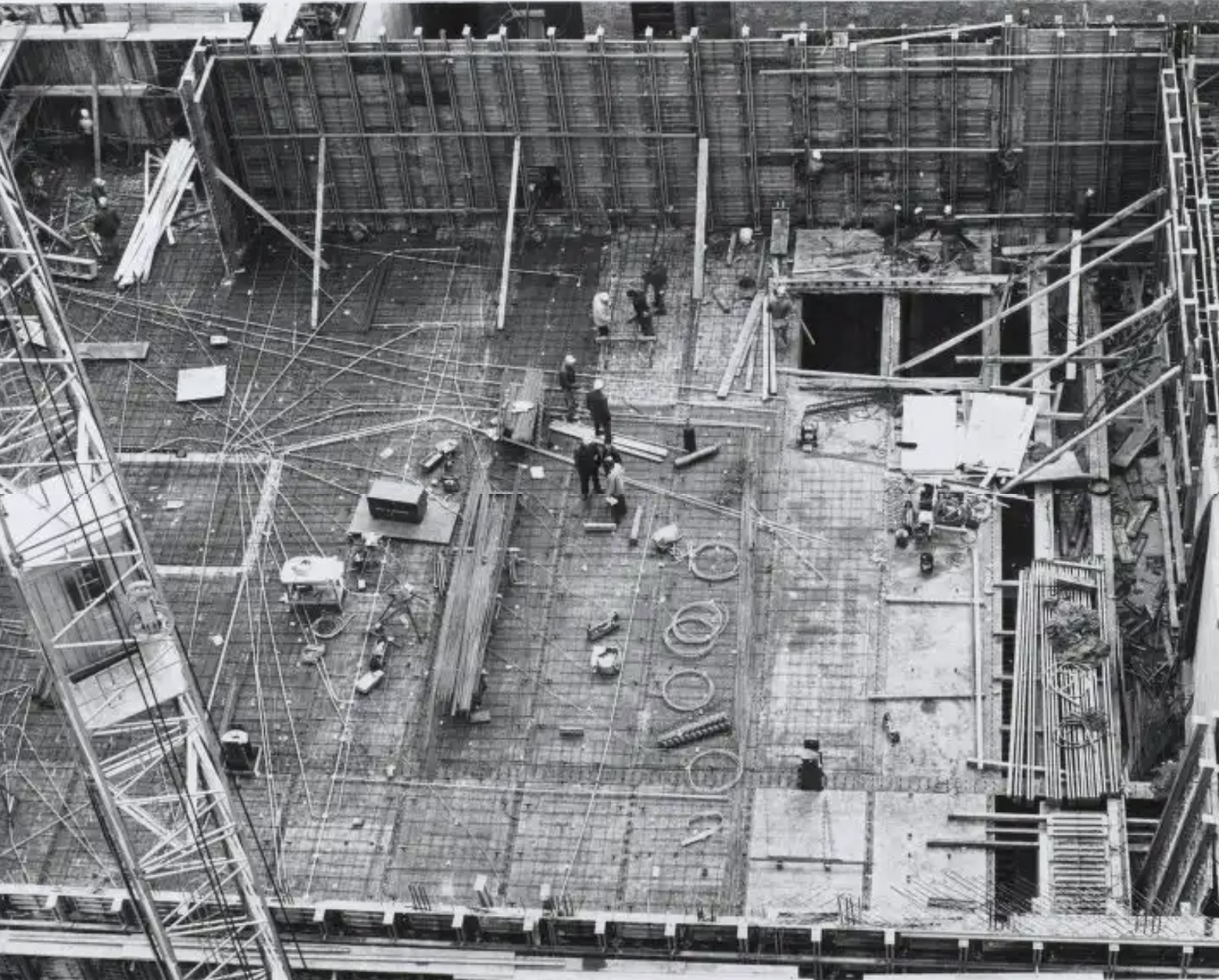
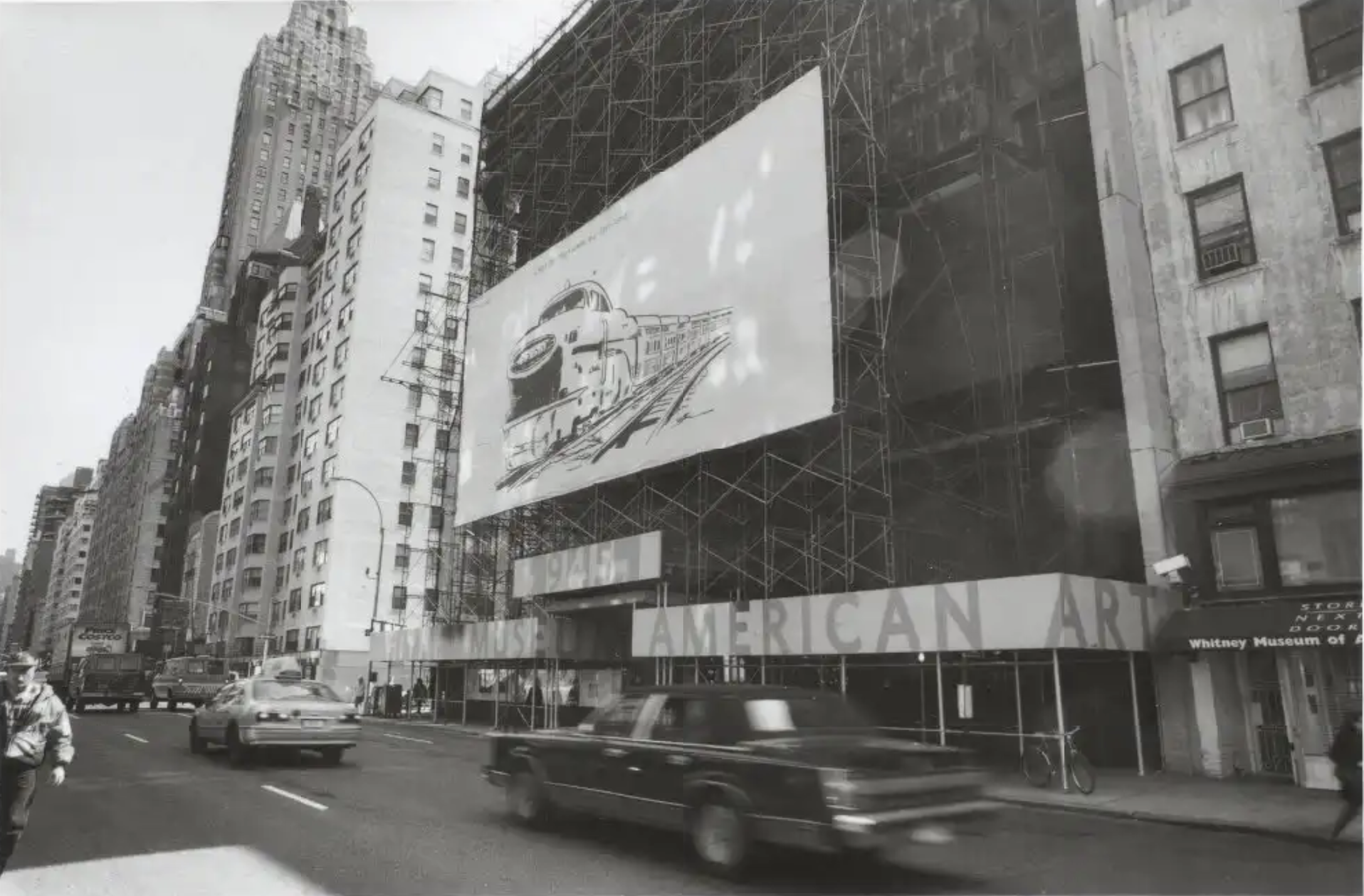
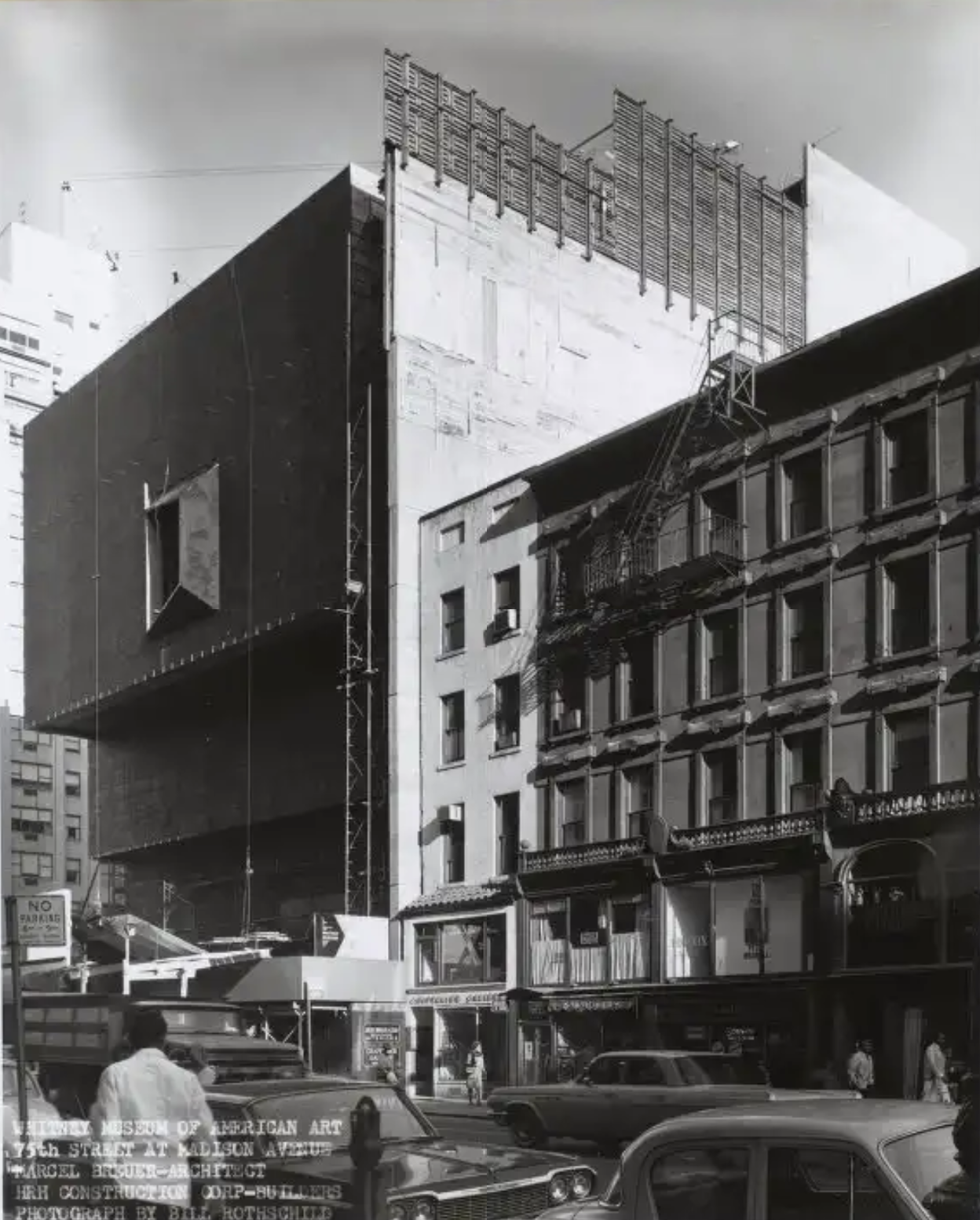

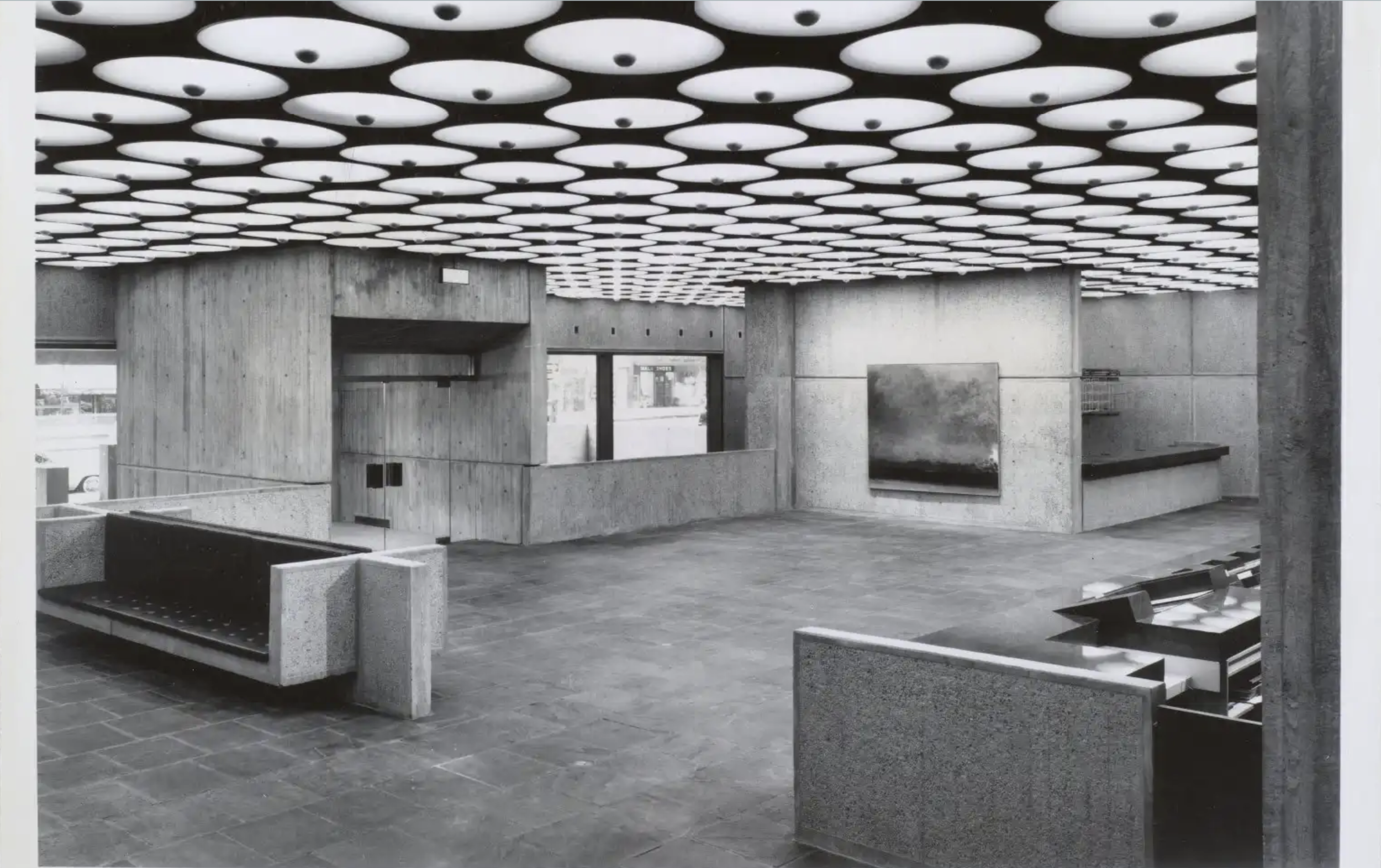
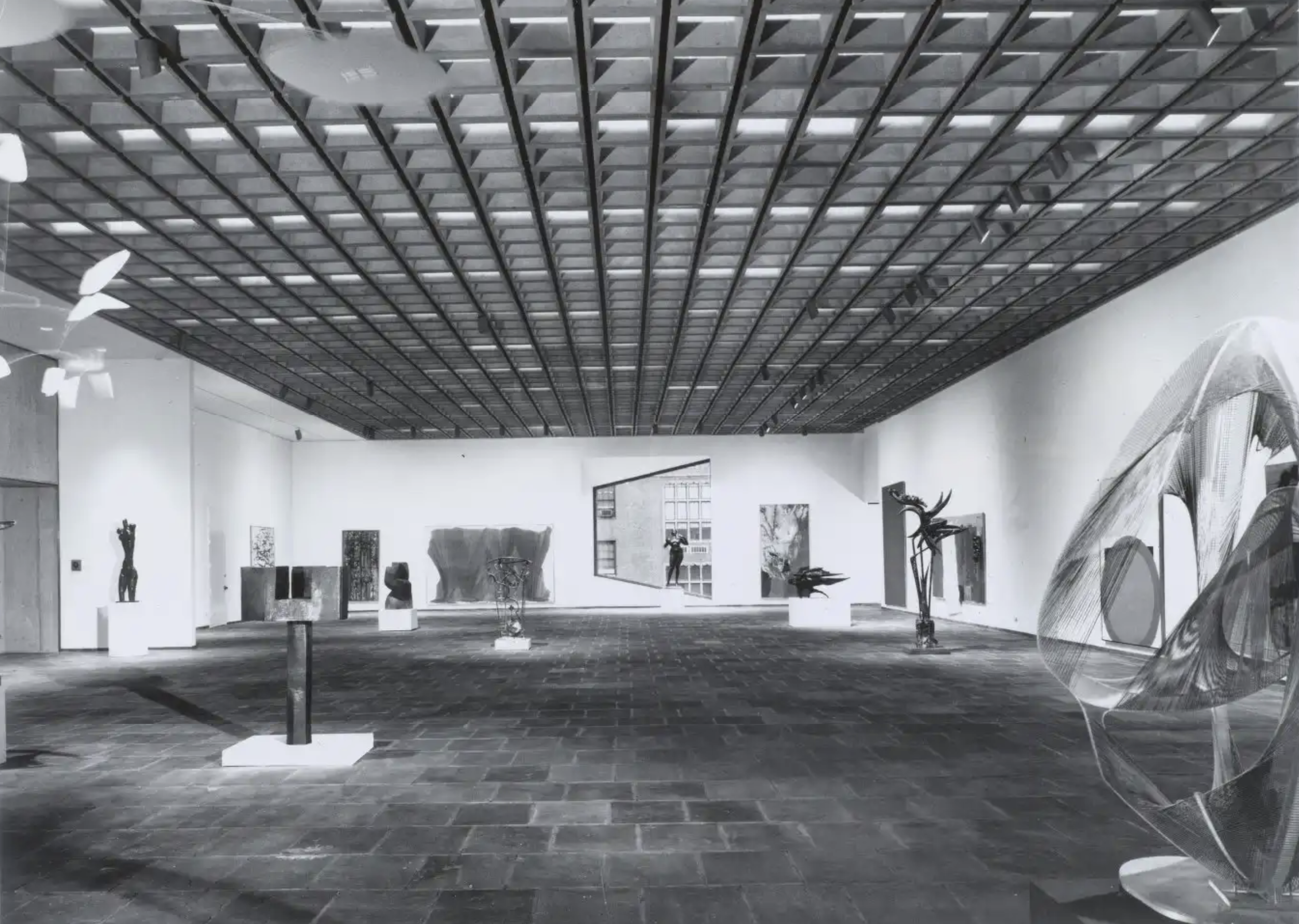
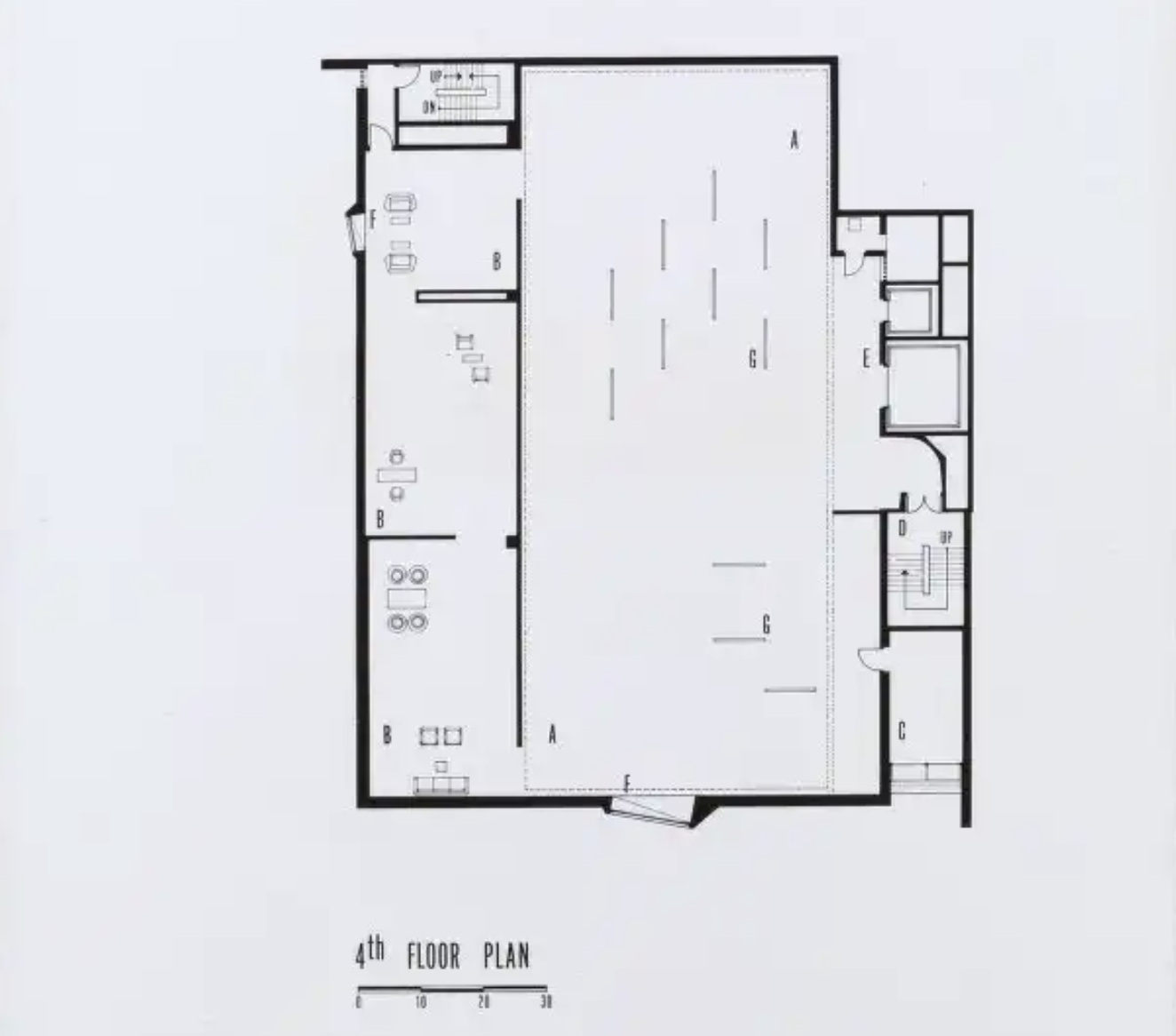
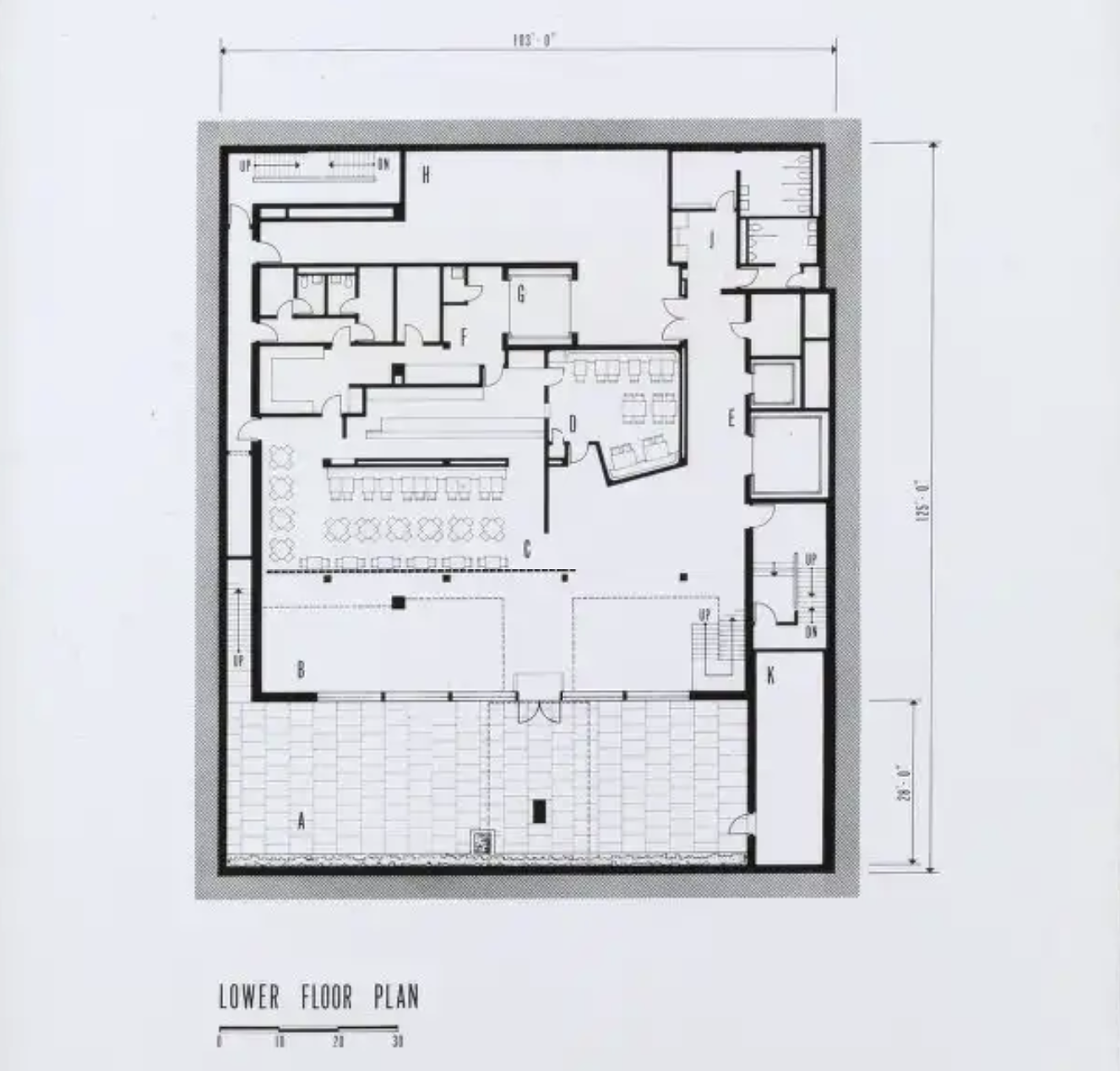

Sources:
Marcel Breuer Digital Archives. Syracuse University Libraries.
Stoller, Ezra. Whitney Museum of American Art: The Building Blocks Series. Princeton Architectural Press, 2000.

